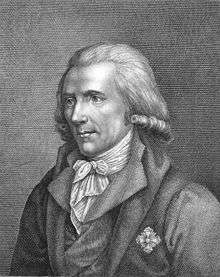Rumford Prize
| Rumford Prize | |
|---|---|
|
Benjamin Thompson, whose grant paid for the formation of the Rumford Prize | |
| Awarded for | Contributions to the fields of heat and light |
| Country | United States |
| Presented by | American Academy of Arts and Sciences |
| First awarded | 1839 |
| Last awarded | 2008 |
| Official website | http://www.amacad.org/about/prizes.aspx |
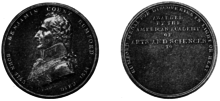
Founded in 1796, the Rumford Prize, awarded by the American Academy of Arts and Sciences, is one of the oldest scientific prizes in the United States. The prize recognizes contributions by scientists to the fields of heat and light. These terms are widely interpreted; awards range from discoveries in thermodynamics to improvements in the construction of steam boilers.
The award was created through the endowment of US$5,000 to the Academy by Benjamin Thompson, who held the title "Count Rumford of the United Kingdom", in 1796.[1] The terms state that the award be given to "authors of discoverie's in any part of the Continent of America, or in any of the American islands". Although it was founded in 1796, the first prize was not given until 1839, as the academy could not find anyone who, in their judgement, deserved the award. The academy found the terms of the prize to be too restrictive, and in 1832 the Supreme Court of Massachusetts allowed the Academy to change some of the provisions; mainly, the award was to be given annually instead of biennially, and the Academy was allowed to award the prize as it saw fit, whereas before it had to give it yearly.[2] The first award was given to Robert Hare, for his invention of the oxy-hydrogen blowpipe, in 1839. Twenty-three years elapsed before the award was given a second time, to John Ericsson.[3]
The prize is awarded whenever the academy recognizes a significant achievement in either of the two fields. It has been given 62 times to 79 individuals, and once to a tri-group committee of 21 people. Awardees receive a gold-and-silver medal.[1] Previous prizewinners include Thomas Alva Edison, for his investigations in electric lighting; Enrico Fermi, for his studies of radiation theory and nuclear energy; and Charles H. Townes, for his development of the laser. One man, Samuel Pierpont Langley, has won both the Rumford Prize and the related Rumford Medal (the European equivalent of the Rumford Prize), both in 1886. Because the prize is awarded by the American Academy of Arts and Sciences, all of the recipients are American, except for one, John Stanley Plaskett, who is from British Columbia. The most recent award was given in 2008 to Sidney D. Drell, Sam Nunn, William J. Perry, and George P. Shultz "for their efforts to reduce the global threat of nuclear weapons".
List of recipients

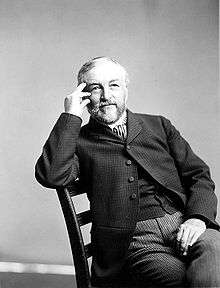

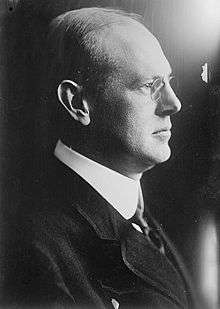
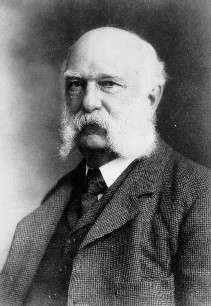


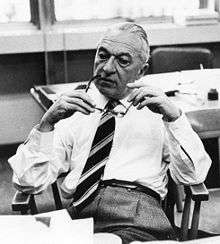
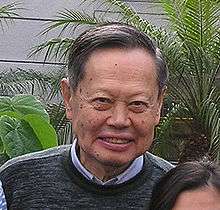


| Year | Name | Location[a] | Rationale |
|---|---|---|---|
| 1839 | Hare, RobertRobert Hare | Philadelphia, Pennsylvania | Inventor of the oxy-hydrogen blowpipe |
| 1862 | Ericsson, JohnJohn Ericsson | New York, New York | His work improved the field of heat management, but the award was specifically for his invention of the caloric engine of 1858. |
| 1865 | Treadwell, DanielDaniel Treadwell | Cambridge, Massachusetts | Heat management. He was awarded especially for his contributions towards a "cannon of large caliber, and great strength and endurance". |
| 1866 | Clark, AlvanAlvan Clark | Cambridge, Massachusetts | Improved refracting telescopes |
| 1869 | Corliss, George HenryGeorge Henry Corliss | Providence, Rhode Island | For improving the steam engine |
| 1871 | Harrison, Jr., JosephJoseph Harrison, Jr. | Philadelphia, Pennsylvania | Towards his concern for safer steam boilers |
| 1873 | Rutherfurd, Lewis MorrisLewis Morris Rutherfurd | New York, New York | For improving the "processes and methods" of astronomical photography |
| 1875 | Draper, John WilliamJohn William Draper | New York, New York | For his work towards apprehending radiant energy |
| 1880 | Gibbs, Josiah WillardJosiah Willard Gibbs | New Haven, Connecticut | Founded the field of chemical thermodynamics |
| 1883 | Rowland, Henry AugustusHenry Augustus Rowland | Baltimore, Maryland | For his research in light and heat |
| 1886 | Langley, Samuel PierpontSamuel Pierpont Langley | Allegheny, Philadelphia | For his work towards the understanding of radiant energy |
| 1888 | Michelson, Albert AbrahamAlbert Abraham Michelson | Cleveland, Ohio | Measured the velocity of light, and contribution towards the motion of the luminiferous ether, and absolute determination of the wavelengths of light |
| 1891 | Pickering, Edward CharlesEdward Charles Pickering | Cambridge, Massachusetts | For his work on stellar photometry and stellar spectra |
| 1895 | Edison, Thomas AlvaThomas Alva Edison | Orange, New Jersey | For his investigations in electric lighting |
| 1898 | Keeler, James EdwardJames Edward Keeler | Allegheny, Pennsylvania | For the applications of the spectroscope, and especially his investigations of nebulae and the physical contents of Saturn's rings |
| 1899 | Brush, Charles FrancisCharles Francis Brush | Cleveland, Ohio | For the development of the electric arc lamp |
| 1900 | Barus, CarlCarl Barus | Providence, Rhode Island | For his heat research |
| 1901 | Thomson, ElihuElihu Thomson | Lynn, Massachusetts | For his work in welding and lighting |
| 1902 | Hale, George ElleryGeorge Ellery Hale | Chicago, Illinois | For his investigations in solar and stellar physics and for the invention of the spectro-heliograph |
| 1904 | Fox Nichols, ErnestErnest Fox Nichols | New York, New York | For his research on radiation, radiation pressure, stellar heat, and the infrared spectrum |
| 1907 | Acheson, Edward GoodrichEdward Goodrich Acheson | Niagara Falls, New York | For the application of the electric furnace to the production of carborundum and graphite |
| 1909 | Williams Wood, RobertRobert Williams Wood | Baltimore, Maryland | For light-related discoveries, including the optical properties of sodium and other metallic vapors |
| 1910 | Curtis, Charles GordonCharles Gordon Curtis | New York, New York | For his improvements to the steam turbine |
| 1911 | Crafts, James MasonJames Mason Crafts | Boston, Massachusetts | For his work in thermometry, and the development of new fixed points on the scale.[b] |
| 1912 | Ives, Frederic EugeneFrederic Eugene Ives | Woodcliff-on-Hudson, New York | For his inventions in color photography and photoengraving |
| 1913 | Stebbins, JoelJoel Stebbins | Urbana, Illinois | For the development of the selenium photometer and its application to scientific problems |
| 1914 | Coolidge, William DavidWilliam David Coolidge | Schenectady, New York | For his invention of ductile tungsten |
| 1915 | Abbot, Charles GreeleyCharles Greeley Abbot | Washington D.C. | For his research in solar radiation |
| 1917 | Bridgman, Percy WilliamsPercy Williams Bridgman | Cambridge, Massachusetts | For his high-pressure thermodynamic breakthroughs |
| 1918 | Lyman, TheodoreTheodore Lyman | Cambridge, Massachusetts | Awarded for his research on short-wave and long-wave wavelengths |
| 1920 | Langmuir, IrvingIrving Langmuir | Schenectady, New York | "For his research in thermionic and allied phenomena" |
| 1925 | Russell, Henry NorrisHenry Norris Russell | Princeton, New Jersey | Awarded for his research in solar radiation |
| 1926 | Compton, Arthur HollyArthur Holly Compton | Chicago, Illinois | Awarded for his research in Roentgen rays |
| 1928 | Nichols, Edward LeamingtonEdward Leamington Nichols | Ithaca, New York | "For his research in spectrophotometry" |
| 1930 | Plaskett, John StanleyJohn Stanley Plaskett | Victoria, British Columbia | For his astronomical spectrographic research[c] |
| 1931 | Compton, Karl TaylorKarl Taylor Compton | Cambridge, Massachusetts | He was awarded the medal for thermionics and spectroscopic research. |
| 1933 | Shapley, HarlowHarlow Shapley | Cambridge, Massachusetts | For his work with the luminosity of stars and galaxies |
| 1937 | Coblentz, William WeberWilliam Weber Coblentz | Washington, D.C. | For his improvements in the measurement of heat and light |
| 1939 | Harrison, George RussellGeorge Russell Harrison | Belmont, Massachusetts | "For pioneering improvements in spectroscopics" |
| 1941 | Zworykin, Vladimir KosmaVladimir Kosma Zworykin | Princeton, New Jersey | Awarded for the creation of the iconoscope and other related devices |
| 1943 | Mees, Charles EdwardCharles Edward Mees | Rochester, New York | For his contributions to photography |
| 1945 | Land, Edwin HerbertEdwin Herbert Land | Cambridge, Massachusetts | For his inventions related to the application of polarized light |
| 1947 | Harvey, Edmund NewtonEdmund Newton Harvey | Princeton, New Jersey | For his research in bioluminescence |
| 1949 | Bowen, Ira SpragueIra Sprague Bowen | Pasadena, California | For his work on the identification of nebulium and for other outstanding works |
| 1951 | Ives, Herbert E.Herbert E. Ives | Montclair, New Jersey | For his research in the field of optics |
| 1953 | Fermi, EnricoEnrico Fermi | Chicago, Illinois | For his investigations in electromagnetic radiation and nuclear energy |
| 1953 | Jr., Willis E. LambWillis E. Lamb Jr. | Stanford, California | Awarded for studying the hydrogen spectrum |
| 1953 | Onsager, LarsLars Onsager | New Haven, Connecticut | For his investigations in thermodynamics related to transportation |
| 1955 | Franck, JamesJames Franck | Chicago, Illinois | For his studies in the investigation of photosynthesis |
| 1957 | Chandrasekhar, SubrahmanyanSubrahmanyan Chandrasekhar | Williams Bay, Wisconsin | For his investigations of the radiative energy balance in stars |
| 1959 | Wald, GeorgeGeorge Wald | Cambridge, Massachusetts | For identifying the biochemical basis of vision |
| 1961 | Townes, Charles HardCharles Hard Townes | New York, New York | "For his development of the laser" |
| 1963 | Bethe, Hans AlbrechtHans Albrecht Bethe | Ithaca, New York | For pioneering studies in stellar nucleosynthesis |
| 1965 | Collins, Samuel CornetteSamuel Cornette Collins | Cambridge, Massachusetts | For the invention of the Collins Helium Cryostat and other pioneering work |
| 1965 | McElroy, William DavidWilliam David McElroy | Baltimore, Maryland | For his work on the molecular origin of bioluminescence |
| 1967 | Dicke, Robert HenryRobert Henry Dicke | Princeton, New Jersey | "For his contributions to microwave radiometry and to the understanding of atomic structure" |
| 1967 | Van Niel, Cornelius B.Cornelius B. Van Niel | Stanford, California | For his contributions to the study of photosynthesis |
| 1968 | Schmidt, MaartenMaarten Schmidt | Pasadena, California | For his work deducing the spectra of quasi-stellar objects |
| 1971 | M.I.T. Group
Canadian Group |
|
"For their work in the field of long-baseline interferometry" (full list here) |
| 1973 | Wilson, E. BrightE. Bright Wilson | Cambridge, Massachusetts | For pioneering the importance of symmetry in polyatomic molecules and for his active work in the field of microwave spectroscopy |
| 1976 | Rossi, BrunoBruno Rossi | Cambridge, Massachusetts | For discovering the origins of cosmic radiation |
| 1980 | Weber, GregorioGregorio Weber | Urbana, Illinois | For researching the theory of, and working on the application of, fluorescence |
| 1980 | Yang, Chen NingChen Ning Yang
Mills, RobertRobert Mills |
Stony Brook, New York
|
"For development of a generalized gauge invariant field theory" |
| 1985 | Dehmelt, Hans GeorgHans Georg Dehmelt
Deutsch, MartinMartin Deutsch Hughes, Vernon WillardVernon Willard Hughes Ramsey, Norman FosterNorman Foster Ramsey |
Seattle, Washington
|
Awarded for his work in the field of atomic spectroscopy |
| 1986 | Leighton, Robert B.Robert B. Leighton
Low, Frank J.Frank J. Low Neugebauer, GerryGerry Neugebauer |
Pasadena, California
|
For his work in developing infrared astronomy |
| 1992 | Norris, James R.James R. Norris
Katz, Joseph J.Joseph J. Katz Feher, GeorgeGeorge Feher |
Chicago, Illinois
|
Awarded for working towards the understanding of photosynthesis |
| 1996 | Mather, John C.John C. Mather | Greenbelt, Maryland | For his research related to the cosmic microwave background |
| 2008 | Drell, Sidney D.Sidney D. Drell
Nunn, SamSam Nunn Perry, William J.William J. Perry Shultz, George P.George P. Shultz |
Stanford University
|
"For their efforts to reduce the global threat of nuclear weapons"[4] |
References and notes
- [a] ^ In this sense, location refers to the recipient's place of work or association.
- [b] ^ The award names him as "James Madison Crafts".
- [c] ^ Only time awarded to a non-US resident.
- [d] ^ This is an affiliation rather than his location.
General
- "Past Recipients of the Rumford Prize". American Academy of Arts and Sciences. 2006. Retrieved 2009-06-16.
- "Academy Prizes". American Academy of Arts and Sciences. 2006. Retrieved 2009-06-17.
Specific
- 1 2 "Academy Prizes". American Academy of Arts and Sciences. 2006. Retrieved 2009-06-17.
- ↑ "The Rumford Medallists of the American Academy of Arts and Sciences". Notes and Records of the Royal Society of London. The Royal Society. 8 (1): 90–94. October 1950. doi:10.1098/rsnr.1950.0004. JSTOR 3087234.
- ↑ Conant Church, William (1890). The Life of John Ericsson. Charles Scribner's Sons. pp. 217–218. Retrieved 2009-06-29.
- ↑ "Nuclear Arms Control Leaders Receive Prestigious Rumford Prize from the American Academy". 2008 Rumford Prize press release (Press release). American Academy of Arts and Sciences. 2008-10-09. Retrieved 2009-06-18.
